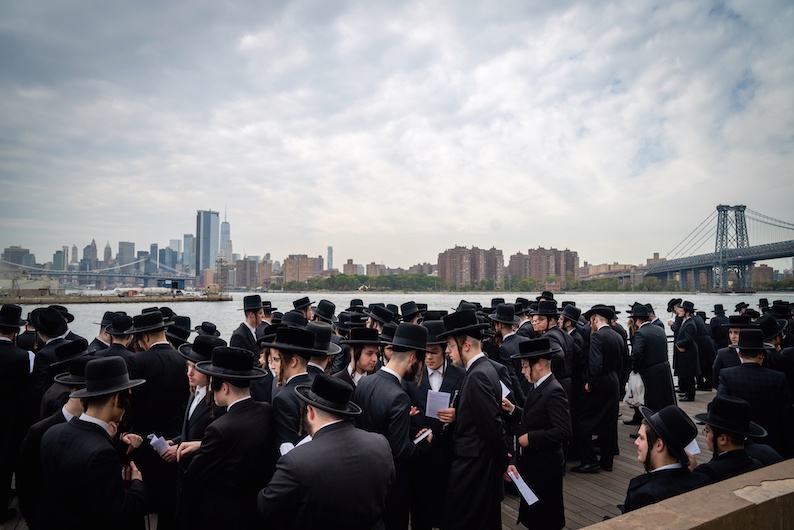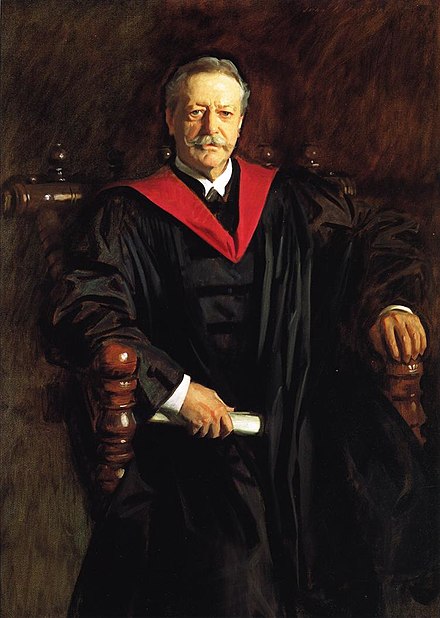Blog: The NY Times Hasidic Schools Expose : antisemitic tropes in coverage of a genuine problem
Is it a sign of the times that the media keeps handing out visual aids for the study of antisemitism? Recently, the New York Times published an article entitled “In Hasidic Enclaves, Failing Private Schools Flush With Public Money.” The newspaper faces criticism that its article is antisemitic. We analyze it to see if or how it reflects antisemitism.

Bigotry Revealed in Unintended Ways
Bigotries often reveal themselves when there is something real to discuss. Morally tenable and, therefore legitimate criticism takes the form of a description of what was done wrong and what was wrong about it. However, all too often, humans fail the test of confining their criticism to the actual bad acts of the individuals or institutions they criticize. Without always realizing what they are doing, they may invoke bigoted memes about the ethnicity or the community of people involved. An example was when French Prime Minister Raymond Barre (a critic of Israel and supporter of France’s imbalanced pro-Arab policy) sought to condemn the “Chez Jo Goldenberg” kosher restaurant terror-bombing in Paris in 1980. What he said, revealingly, was: “This odious bombing wanted to strike Jews who were going to the synagogue and it hit innocent French people who crossed Rue Copernic.” His words make sense only because the old antisemitic meme tells us that Jews must be up to something illegitimate to support a Jewish agenda. Faced with an undeniable act of terror and cruelty by a Palestinian terror organization, Barre had one of those moments where what is presumably a slip of the tongue reveals the underlying bigotry in his thinking. There is a conflict between Palestinians and Israelis, most of whom are Jews. That very complicated conflict was probably the deep foundation for Barre’s invoking of the anti-Jewish trope in the context of a Palestinian attack on a French Jewish cultural institution. Nevertheless, bigotry, revealed against a background of real issues, is bigotry.
A Real Problem But Inappropriate Response
Turning to the New York Times exposé, we can acknowledge that it pointed to an authentic problem. Satmar Hasidim and other groups, although not all, among the several hundred thousand members of the Hasidic Jewish sub-culture isolate their people from the impact of contemporary society to one degree or another, in furtherance of their religious views. The Satmar schools, by design, prepare the next generation of religious followers of their group, who will be dependent on their Grand Rabbis and a few wealthy, influential activists. For this system to work, the future adult followers must learn religiously-mandated literature but as little as possible of basic general studies that might prepare them to function in the modern world without dependence on their leadership. The article shows that they do not learn tools the learning of which might expose them to values from outside the limited circle of their sub-culture. By the age of ten, most of us take basic math and English literacy for granted. Many Hasidic youngsters cannot because their community leaders decided they should not. The NY Times did not make this up. It is an actual and morally untenable situation.
Yet, like Raymond Barre, the NY Times presented the issue while adopting well-known antisemitic tropes and focusing on them. Even as they published some important findings and raised some important questions they chose to weave the human problem of stunting the intellectual growth of these children into a discussion of possible fiscal mismanagement of benefits provided for poor populations in the New York area. To illustrate, take the sentence: “The money is subsidizing instruction that has regularly involved corporal punishment.” The money, of course, is not subsidizing corporal punishment, even though corporal punishment is undeniably an ugly and unacceptable part of the abusive nature of some extremist Hasidic school systems. Weaving these two issues together obscures the fact that the money goes to support genuinely poor, very young, and very vulnerable people. Instead of focusing on children who may be denied a human right to an education that prepares them to function as citizens in contemporary America, we read a confusing melange about Jews taking the public moneys so they can beat up their children. Jews/Money/Cruelty. Lucky they are not demanding a pound of flesh from those kids! Another example is the implication that aid to “Hasidic schools” comes at the expense of “tens of thousands of people” hung out to dry “on waiting lists.” The New York Times throws out statistics about how much money the public purse spends because many of the Hasidic youngsters or the schools qualify for meals in school. Then there are federal programs that fund administrative activities and a New York state program that supports transportation, etc. The article does not provide any balancing positive reason for the funding other than allegations of disproportionate political influence and the logically unconnected matter of corporal punishment. It has nothing to say, for example, about average incomes in that community or the average size of families, costs of tuition for their parochial school networks, or the unique sociological / religious requirements of living geographically close together that create high costs of housing in Hasidic areas. Instead the text juxtaposes Jews with people on waiting lists. Of course, you can say that about any recipient of any social support where the powers that be decide not to fund all of the needy. Displaying the meme of Jews as selfish schemers elides two questions.
First, the dysfunction of civil society. The solution is not to deprive innocent Hasidic children but to expand funding for others in this wealthy region of the most prosperous country on Earth.
Second, it seems Hadisic Jews are not the only ones who miss basic notions in civics. There is democratic legitimacy to working on behalf of your consituency. Have the Hasidic community leaders made the system work without breaking the law? The article does not establish that laws have been broken (with the exception of the cases of assault on children). It deploys the meme that Jews scheme and that somehow lobbying for your community is illegitimate. However, working with elected officials to gain resources for your community is what democracy demands of the leaders of constituencies. In that sense, “working the system” is part of what democracy is all about.
The New York Times may have indirectly recognized its failure to put the children in the center rather than politics and money. A few days after the publication of that first article, its board of editors published an opinion piece that very much focused on the children. Entitled “It Is Long Past Time to Help New York’s Hasidic Children,” it came too late. The harm was done. The credibility of the newspaper among the people it needed to convince was undone. This situation was not helped when the newspaper continued its ill-advised and ongoing publication of articles about Hasidic Jews, and about its own reporting on Hasidic Jews. Discussion in the Jewish community seems mostly focused, predictably in light of how the hostile memes were invoked, not on what needs to be done to help young people, but on whether the New York Times has decided to campaign against the Hasidic way of life!
Bigoted Memes Because “We Are Talking About Jews Here”

A reader can almost hear the echo of the classic response of the great bigot who promoted antisemitic quotas in American universities, the late Harvard President A. Lawrence Lowell. Judge Learned Hand, objecting to the quotas, pointed out that Christian students cheat just as Lowell alleged against Jewish ones. Lowell replied: “Don’t change the subject. We are talking about Jews here!” Lowell, who had created the meritocratic admissions process that led to growth of the Jewish student body, probably did not see himself as a bigot. He revealed his bigotry when he talked about Jews as if special rules applied to discussion of them. The regular rules of precision in what we say, fairness, and equality did not apply.
Even someone from outside the Hasidic subculture, acutely aware of the human costs of the kind of education provided by extremists of Satmar and similar Hasidic groups cannot help but hear the echoes of Mr. Lowell and Mr. Barre in this article and not because we imagine those echoes. Not all antisemitism takes the form of physically violent thuggery like we all too often see directed at visibly Hasidic people on New York’s streets. Harvard president and legal scholar that he was, Lowell would never have stooped to assault a Jew physically. Neither would Raymond Barre. And neither would the staff of The New York Times. However, Jewish topics evidently make them uncomfortable, morally discombobulate them, and distort their ability to function with integrity.
Use This Article to Teach About Antisemitism
The New York Times article on dysfunctions in the Hasidic school systems of the New York area is a useful visual aid. When analyzed in terms of its latent antisemitism, it can show how real problems can offer a litmus test for revealing bigotry. The problems with the extreme Haredi school systems are very real. The New York Times did not make this up. Yet, the way the New York Times organized its material for presentation, the places its journalists and editors put their thematic emphasis, and the areas it decided should catch our attention betray a weakness for antisemitic memes. For this, people with integrity need to call them to account.
